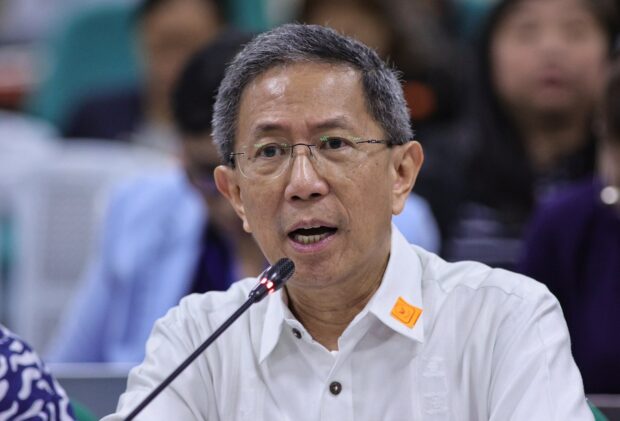
Energy Sec. Raphael Lotilla—Senate PRIB
The country is assured of sufficient electricity supply amid a projected increase in demand due to the El Niño phenomenon, the Department of Energy (DOE) said on Thursday.
“As we said, there is right now adequate supply but we will continuously monitor [the situation],” Energy Secretary Raphael Lotilla said on the sidelines of the Business-to-Business Matching Event to Support Energy Transition held in Taguig City.
In a separate interview, Energy Undersecretary Rowena Cristina Guevara said the DOE was not anticipating the declaration of red or yellow alerts in the country based on the latest estimates.
“The only possible thing that might happen is that you might have to run the more expensive plants [and] electricity rates will increase. But then this is better than having no electricity at all,” Guevara said.
A yellow alert is raised when the operating margin falls below the transmission grid’s regulating and contingency requirements. On the other hand, a red alert is declared when the grid does not have enough buffer to avoid power interruptions.
“When we look at the numbers for Luzon, we are okay. Our margin would be about 300 to 700 megawatts even with the 70 percent of the hydro dam,” Guevara said, adding that the projected margin in Mindanao ranged between 25 to 30 percent.
“For Visayas, the power supply is somewhat thin. For the Visayas, our margin on a typical day is anywhere from 8 percent only, so we are a bit critical in the Visayas,” she said.
According to Lotilla, the country is “much better off now” to cope with El Niño, owing to the presence of natural gas power plants and reception facilities.
Less water for irrigation
Despite having contingency measures in place, the DOE sees the need to reduce water use for power as the agriculture sector needs it for irrigation.
“We’re monitoring closely the rate at which the usage for irrigation is also depleting the volumes for power use and exploring ways by which we can have the water being released for irrigation used for power because … [the] use of water for hydropower is nonconsumptive,” Lotilla said, adding that dams have adequate water supply.
“In other words, you don’t consume the power that goes into the power turbines. So the same power can be used for irrigation, and there must be a way to better complement this,” he explained. Lotilla said the DOE would also enlist government offices nationwide to be role models in efforts to conserve energy to help reduce power costs since the country won’t need to run diesel-fired and oil-based power plants, which usually jack up electricity rates.

